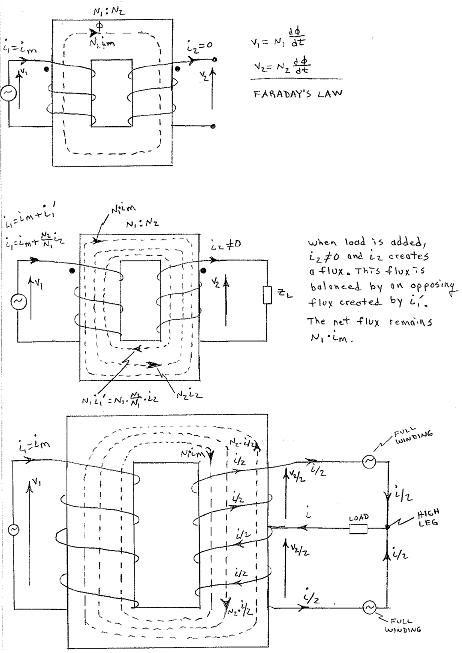electro6
Member
- Location
- Suin City, AZ USA
"Negative" power factor
"Negative" power factor
I am an instructor of basic circuit theory in a community college in the Southwest USA. I hope none of my students will see the discussion about "negative" power factor. The power factor in AC circuits has always been defined as the cosine of theta; and alternatively, as the ratio of real power (watts) divided by apparent power (VA), or in basic circuit solutions, the circuit resistance divided by the circuit impedance. Power factors can be lagging (the usual case) or leading. Numerically the power factor is always a postive number between 0.0 and 1.0 (never a negative number). These concepts can be clearly shown by drawing a graph of the voltage and current sine waves. The power factor angle (theta) represents a time delay that occurs in AC circuits between the voltage sine wave and the curent sine wave. The graph is usually drawn with time zero at the left hand edge and one complete sine wave shown ending at time 16.8 milliseconds at the right hand edge. This time interval represents an angle from zero degrees to 360 degrees. Please note there are no "negative" angles here and no "negative" values of the cosine. The power triangle of any AC system or circuit consists of watts, inductive reactance Vars and capacitive reactance Vars. Regardless of the quantity of these three components, the resulting power factor is either leading or lagging, but never a negative number. If a PV system produces a leading power factor the related utility should be very happy because the PV system will produce a higher power factor for the entire system. It would be like the utility installing a capacitor bank in the system to improve system power factor, except it would be for free. I've been teaching for 13 years and have never seenb a textbooik that referred to a "negative" power factor and I hope it does not become common usage.
"Negative" power factor
I am an instructor of basic circuit theory in a community college in the Southwest USA. I hope none of my students will see the discussion about "negative" power factor. The power factor in AC circuits has always been defined as the cosine of theta; and alternatively, as the ratio of real power (watts) divided by apparent power (VA), or in basic circuit solutions, the circuit resistance divided by the circuit impedance. Power factors can be lagging (the usual case) or leading. Numerically the power factor is always a postive number between 0.0 and 1.0 (never a negative number). These concepts can be clearly shown by drawing a graph of the voltage and current sine waves. The power factor angle (theta) represents a time delay that occurs in AC circuits between the voltage sine wave and the curent sine wave. The graph is usually drawn with time zero at the left hand edge and one complete sine wave shown ending at time 16.8 milliseconds at the right hand edge. This time interval represents an angle from zero degrees to 360 degrees. Please note there are no "negative" angles here and no "negative" values of the cosine. The power triangle of any AC system or circuit consists of watts, inductive reactance Vars and capacitive reactance Vars. Regardless of the quantity of these three components, the resulting power factor is either leading or lagging, but never a negative number. If a PV system produces a leading power factor the related utility should be very happy because the PV system will produce a higher power factor for the entire system. It would be like the utility installing a capacitor bank in the system to improve system power factor, except it would be for free. I've been teaching for 13 years and have never seenb a textbooik that referred to a "negative" power factor and I hope it does not become common usage.


